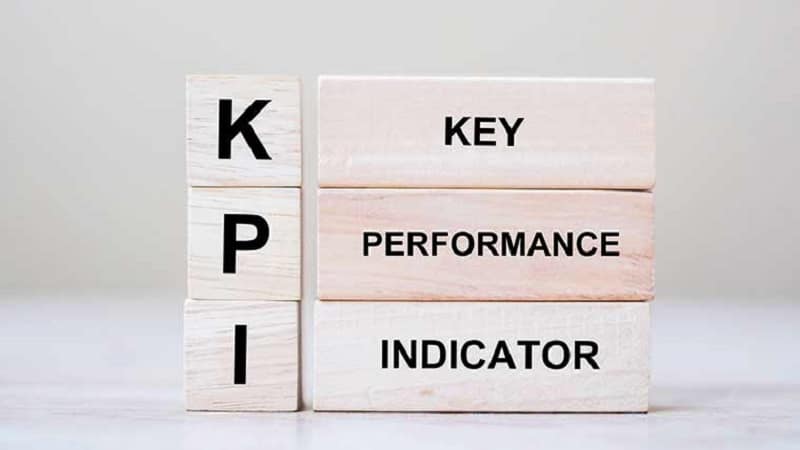
Why do we need Key Performance Indicators?
Key Performance Indicators (KPIs), when talking about business, are measurable values that demonstrate how effectively a company, organization, project is achieving its key business objectives. They are relevant because they provide a way to track progress towards goals and help identify areas where improvement is needed.
In business, KPIs can be used to measure a wide variety of business metrics, such as sales, marketing, customer service, productivity, operational efficiency, and financial performance. The specific KPIs that are most important for a business will vary depending on the industry and the business’s goals, but it is important to understand that most KPIs are standard for their industry. A good reference to learn and understand how to use these standard KPIs is the book “Key Performance Indicators (KPI): The 75 Measures Every Manager Needs To Know” by Bernard Marr.
For example, a retail business might track KPIs such as number of units sold, total revenue, average order value, and customer lifetime value. A marketing agency might track KPIs such as click-through rate (CTR), conversion rate, and cost per acquisition (CPA). A customer service team might track KPIs such as customer satisfaction score, number of customer complaints, and customer churn rate.
Additionally, another important aspect to note is that data analytics makes use of KPIs in a number of ways:
Identify trends: By analyzing data over time, data analytics can identify trends that can help businesses target their KPIs. For example, if a business sees a trend of declining customer satisfaction, it can target its KPIs to improve customer satisfaction.
Identify correlations: Data analytics can be used to identify correlations between different data points. This information can be used to target KPIs that are most likely to have a positive impact on other KPIs. For example, if a business sees a correlation between customer satisfaction and product quality, it can target its KPIs to improve product quality.
Make predictions: Data analytics can be used to make predictions about future performance. This information can be used to target KPIs that are most likely to help the business achieve its goals. For example, if a business predicts that its sales will increase in the coming quarter, it can target its KPIs to ensure that it has the capacity to handle the increased demand.
Furthermore, in the role of a decision maker, it becomes crucial to carefully curate a set of relevant KPIs in order to effectively distill the operation and strategic direction of the business. To this end, it is imperative to take into account the following factors:
The business’s goals: The KPIs should be aligned with the business’s goals.
The industry: The KPIs should be relevant to the industry in which the business operates.
The data availability: The KPIs should be measurable, and the data should be available to track them.
The resources: The KPIs should be realistic and achievable given the resources available.
Here are some additional things to keep in mind when using KPIs:
KPIs should be specific, measurable, achievable, relevant, and time-bound (SMART).
KPIs should be monitored on a regular basis.
KPIs should be communicated to all stakeholders.
KPIs should be reviewed and updated regularly.
How to track KPIs?
Once the KPIs have been chosen, they need to be tracked on a regular basis. This can be done using a variety of tools, such as spreadsheets, databases, and data visualization software.
How to use KPIs to improve performance?
The KPIs should be used to identify areas where improvement is needed. Once the areas for improvement have been identified, strategies can be developed to address them. The KPIs can then be used to track the progress of the improvement initiatives.
Examples of relevant KPIs
Here are some examples of relevant KPIs for different industries:
Sales: Number of units sold, total revenue, average order value, customer lifetime value.
Marketing: Click-through rate (CTR), conversion rate, cost per acquisition (CPA).
Customer service: Customer satisfaction score, number of customer complaints, customer churn rate.
Productivity: Employee productivity, number of defects, number of projects completed on time.
Operational efficiency: Cost per unit, Cycle time.
Financial performance: Profit margin, return on investment (ROI), debt-to-equity ratio.
In conclusion, KPIs serve as the universal language of business for managers because they provide a concise and measurable way to gauge the effectiveness, progress, and alignment of various aspects within an organization or business. KPIs enable managers to communicate complex strategies, track performance, make informed decisions, and ultimately drive the success of the business by speaking in a language that transcends industry boundaries and allows for clear and data-driven insights into their operations.
Recent Posts
- Beyond the Rear-View Mirror: How Modern Analytics Is About Predicting the Future, Not Just Reporting the Past
- “What If…?” — Moving from Static Dashboards to Strategic Conversations with Your Data
- The Power BI Revolution: Why Giving Data to Everyone Is the Smartest Business Move
- Why Your Data “Plumbers” Are Your Most Valuable Growth Asset
- Data-Driven or Data-Overwhelmed? How to Build a Culture That Actually Uses Analytics

